
Over the past few NBL seasons, we’ve seen young talents such as Josh Giddey, Rocco Zikarsky, and LaMelo Ball come up big for their teams at the tender age of 17 and 18 while on the other hand, we’ve been able to marvel at Brad Newley, David Barlow and Daniel Kickert all still contributing to their teams at age 38.
Since 1979, the NBL has seen players as young as 15 logged minutes in the competition, as well as some of the greatest players ever to lace up their boots in this country, have played on until beyond their 40s.
So, with youthful exuberance and spry longevity so well represented in our great league, we’ve decided to bring you our list of the greatest players in NBL history for each age group.
15 Years Old
In 1980 the Launceston City Casino Tigers entered the NBL using a grant provided by the Tasmanian Government and the developers of the state’s second casino. By 1982 that money had disappeared, and the team it bought, folded after a 5-21 season in 1982.
In the Tigers’ last year of existence, they relied on local talent, which saw local duo John Horder and Craig Viney make their NBL debut for the team at the age of 15 years and 8 months.
Viney would see limited playing time (he only scored by sinking one free throw in his ten games), while Horder averaged 4 points per game and was talented enough to go on and play a second season in the league for cross-state rival Devonport in 1983.
16 Years Old
Twelve players have played in the league at sweet sixteen, but most (as you’d understand) delivered limited numbers in a few minutes of playing time. Most averaging less than a point or two per game.
The players who’ve graced the league in the very first year they could also apply for their learner’s plates were John Horder while playing his second season, Ray Dawson, Greg Hemmings, David Van Zeeland and Warren Fenton (Bankstown), Kym Borrett (Glenelg), Ian Bartholomew and Alex Sakuns (Illawarra), Andrej Lemanis and Wayne Larkins (St Kilda), Martin Clarke (Devonport) and Tai Webster (New Zealand).
The only player who became a regular rotation player was a young guard named Martin Clarke, who would eventually become the foundation of the AIS basketball program and a future head coach in the NBL.
In 1984, Marty played in 17 of Devonport’s 23 games, averaging three points and two rebounds during a sub-par campaign for the Warriors, who finished with 4 wins and 15 losses that season.
17 Years Old

Seventeen is the age when some stand-out players have gone on to make significant contributions to their NBL teams.
Ray Dawson (Bankstown) and Ian Robilliard (Sydney) both played full seasons and averaged five points per game before they could crack open their first Emu Lager (a former sponsor of the NBL).
Slammin’ Sam MacKinnon averaged six points, three rebounds, and three assists in 20 minutes per game as a 17-year-old rookie with South East Melbourne Magic in 1994.
In 1984, the Melbourne Tigers debuted in the NBL, and on that roster was a seventeen-year-old Nigel Purchase, who averaged 8 points and 4 rebounds per game.
But the standout is the only one to win the NBL Rookie Of The Year Award at seventeen, Boomers legend and future NBA talent Shane Heal.
Heal debuted in 1988 with the Brisbane Bullets and averaged 15 points in 27 minutes per game while backing up starting point guard Darren Perry. Shane’s scoring punch off the bench propelled Brisbane to third on the ladder before they fell short to the Perth Wildcats in an elimination finals game.
18 Years Old

It should be no surprise that the great one, Andrew Gaze, who made his NBL debut in 1984, still holds the title as the best 18-year-old to ever play in the NBL. Gaze averaged an eye-watering 29 points, 7 rebounds and 4 assists in his rookie of the year season with his beloved Melbourne Tigers.
Melbourne were perennial cellar dwellers in their first years in the NBL, and despite Gaze’s impact, they could only limp to an underwhelming 11-13 record.
In the 42 NBL seasons since his storied arrival on the Australian basketball landscape, the only player to come within a thousand lightyears of Gaze’s rookie numbers was current NBA star LaMelo Ball, who averaged 17 points, 7 rebounds and 7 assists at 18 years of age during his stint with the Illawarra Hawks.
19 Years Old
Andrew Gaze then went on to average 30 points, 7 rebounds, and 4 assists in his second NBL season, a stat line unmatched by any player in the league since; however, his Tigers did even worse in their second year in the league, finishing with 5 wins and 21 losses for the year.
His Boomers teammate Shane Heal debuted in the NBL at 17 years of age in 1988 and, by his third season, had developed into a superstar in his own right. At 19, he averaged 22 points, 3 rebounds, and 8 assists for the Geelong Supercats, who, like Gaze’s Tigers, struggled to get wins early in their journey. Heal’s Supercats finished with an 11-15 record and a 10th-place finish on the season.
Mark Bradtke and Joe Ingles also rank among the best 19-year-olds to play in the NBL, making all four of these nineteen-year-olds players who had NBA careers in addition to their time in the NBL.
20 Years Old
The conversation for the Greatest of All Time (GOAT) in the NBL begins and ends with one name – Andrew Gaze, and being that’s the case he sits at number one on the list for most of his career. He averaged 37 points, 7 rebounds and 4 assists in 1986, and this was not even his best effort (that’s next season). Gaze’s other-worldly numbers didn’t help the Tigers in the standings, however. Melbourne tallied six wins and twenty losses that season, but for the first time in his career, Gaze was named part of the year’s All-NBL First Team.
Simon Cottrell would go on to play thirteen years in the NBL, but at age twenty and in his third NBL season, the bruising forward was already a monster. The Devils had minimal talent on their roster and would win only four of their 23 games that season, but Cottrell balled out and averaged 24 points, 14 rebounds, and 1 assist in 1984. Cottrell’s play in 1984 propelled him into national team selection and saw him earn a Boomers jersey for the 1986 FIBA World Championships.
21 Years Old
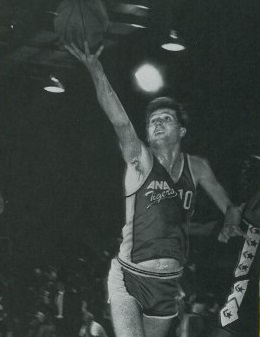
In 1987, Gaze had the highest-scoring season in NBL history. At 21 years of age, he averaged 44 points, 8 rebounds, and 6 assists per game, including a 60-point game against the Newcastle Falcons and five other 50-point games.
Second on the list is one of the greatest imports in NBL history, David Winslow. He scored 74 points in a pre-season game for the Adelaide City Eagles before averaging 25 points, 13 rebounds, and 1 assist in 1982. Steals and blocks were not recorded in 1982, but anyone who saw the 21-year-old in action knew he had a bunch of them in every game.
Vince Hinchen, in his debut season, was explosive, to say the least. After being drafted to the Cleveland Cavaliers in 1984 and narrowly missing the cut, he put up 31 points, 6 rebounds and 3 assists per game in 14 games for Bankstown, who finished twelfth on the ladder with a record of 6-20.
22 Years Old
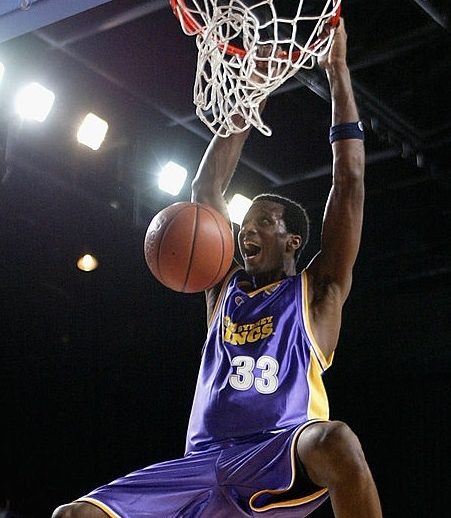
From the ages of 18 to 22, no one outperformed Andrew Gaze on the court. In 1988, his numbers dipped a little compared to the previous year’s output (but it was always going to be difficult to continue dropping 44 points every night!).
Gaze’s scoring dropped from a ridiculous 44 points to an almost human 37 points per game, leading his Melbourne Tigers team to an 8-win season, their best result since their 1984 debut season.
While offensively, Gaze had no equals at twenty-two, perhaps the greatest “one and done” player in NBL history should be listed as the best 22-year-old player in NBL history. Chris Williams led the Sydney Kings to their first NBL championship in 2003. Weekly performances like his 34-point, 15-rebound, 11-assist triple-double effort against the West Sydney Razorbacks were common in 2003, and his 24 points, 12 rebounds, and 4 assists per game made Williams an easy choice for the league MVP award at season’s end.
23 Years Old
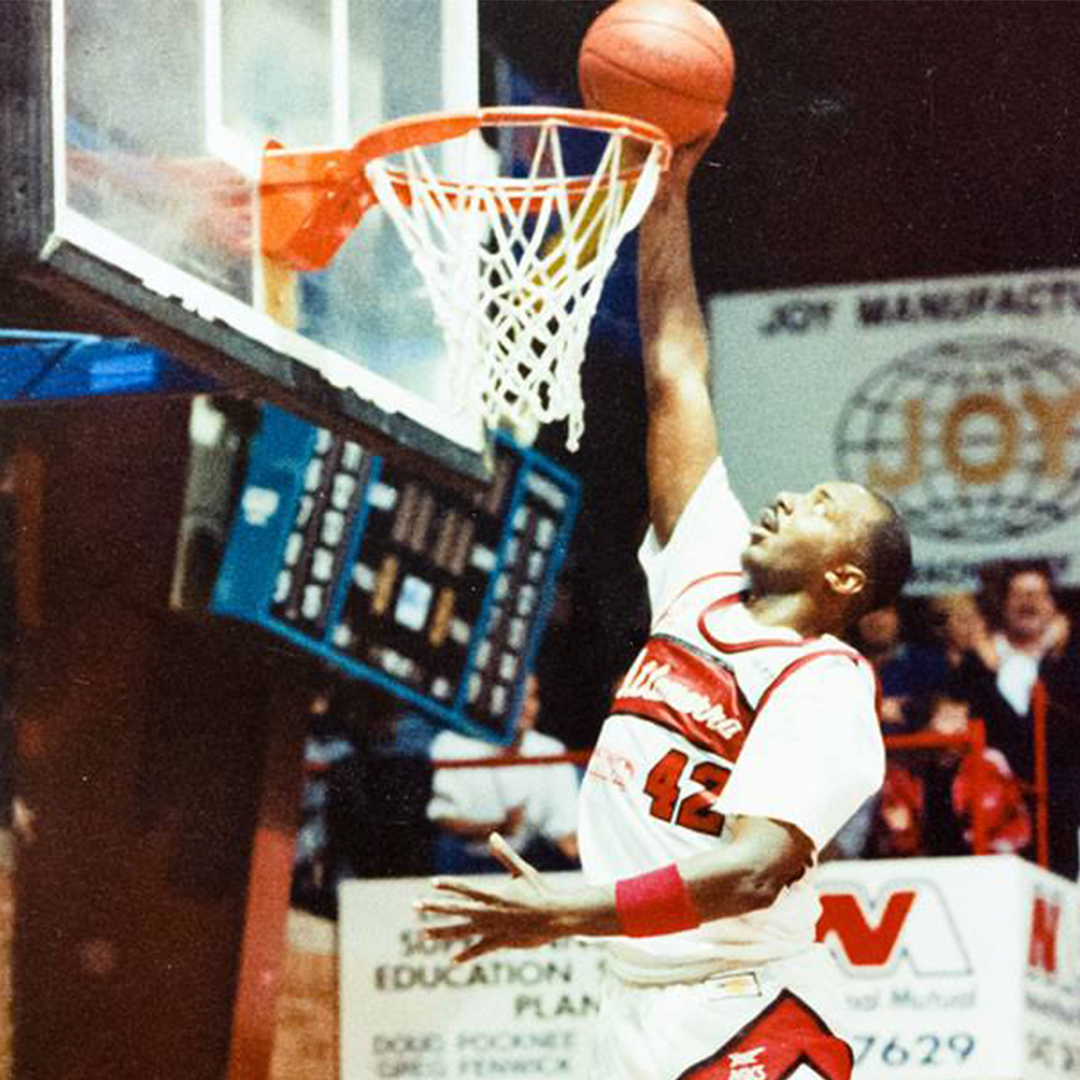
With a vast posterior and a wide array of spin moves, “Stormin” Norman Taylor was unstoppable in the low post despite being only 206cm. He went 61% from the field this season and went on to make 65% of his field goals over his career – in fact, he owns the first and fifth most efficient seasons of all time in the NBL. During the season of his 23rd year, he averaged 29 points, 12 rebounds and 3 assists and led the Hawks to a 7-17 record.
In 1989, Andrew Gaze averaged 36 points, 5 rebounds and 7 assists and led the Tigers to the playoffs for the first time in the team’s history. The Tigers finished fourth on the ladder with a 17-10 record before being eliminated in the first round by the Sydney Kings. For the first time, Gaze led the league in both scoring and assists and captured the NBL All-Star MVP.
Carfino made his NBL debut for the Hobart Devils at 23 and averaged 33 points, 4 rebounds, and 7 assists per game. He finished fourth in scoring and second in assists, which earned him All-NBL first-team honours. Notably, he was also runner-up to Leroy Loggins for the league’s Most Valuable Player.
24 Years Old
In May 1990, Eastside Spectres Bruce Bolden and Dean Uthoff both tried to stop Taylor as he notched up a Hawks all-time record 54 points at 76% from the field with 13 rebounds to boot in a 122-117 Illawarra win. Norman Taylor’s 1990 season has the highest player efficiency rating of all time as he averaged 28 points, 10 rebounds and 3 assists for the year.
During a 12-month period from mid-1989 to 1990, Andrew Gaze was part of an NCAA Final Four run with Seton Hall, a seventh-place finish in the FIBA World Championships, an NBA try-out with Seattle and then led the Melbourne Tigers to their second top-four finish in franchise history and “Drewey” was still able to average 38 points, 5 rebounds and 7 assists in the process.
In 1985, Mark Davis played his first NBL season at 24 and dominated the league from day one. He averaged 28 points, 18 rebounds, and 1 assist while taking the 36ers to the Grand Final before falling short to the Brisbane Bullets in the deciding game.
25 Years Old
Scott Fisher’s 1989 season is easily the best individual haul by a player who also went on to win an NBL championship.
Fisher posted 38 points, 7 rebounds, 5 assists and 4 steals against Westside Melbourne in the first game of the season. A career-high 45 points against Newcastle then won the league’s Most Valuable Player award after averaging 32 points, 13 rebounds and 4 assists per game. Fisher then led North Melbourne to a 2-0 Grand Final victory over Canberra and claimed Grand Final MVP honours.
Andrew Gaze’s ability to take the Melbourne Tigers to a top-five finish three years in a row saw newfound respect for his all-around game rather than just his incredible scoring ability. At this age, Andrew was awarded his first league MVP in 1991 after averaging 39 points, 4 rebounds, 6 assists, and a career-high 2.7 steals for the season.
26 Years Old

In his sixth season in Australia, James Crawford moved from the Canberra Cannons to the Perth Wildcats, where he would play his remaining 13-year career (outside of a one-game cameo for the Cannons in 2003).
In 1987, Crawford averaged 33 points, 12 rebounds, and 3 assists and led a Wildcats team that had never made the playoffs to a fourth-place finish and a 19-7 record. The Wildcats have not missed the playoffs in the 33 years since!
As an encore to an NBL championship and MVP season, Scott Fisher delivered 31 points, 12 rebounds and 3 assists per game in 1990. This season ranks ninth all-time for NBL PER, but Fisher’s North Melbourne squad fell short to the Perth Wildcats in the semi-finals in their quest for back-to-back titles.
27 Years Old

At 27, Gaze completed the journey he and his father Lindsey set out to achieve in 1984 when the Melbourne Tigers joined the NBL ranks. He averaged 32 points, 5 rebounds and 6 assists per game en route to the NBL championship. Surprisingly, the season he led the Tigers to their first championship was the only season between 1991 and 1998 where he missed out on claiming the league’s MVP award, instead, voters went with South East Melbourne Magic’s Robert Rose, but the championship glory meant this oversight by the league was a mere footnote for Gaze.
The NBL added steals and blocks to its statistics in 1984, which meant the statistical prowess of Leroy Loggins during the early years of the league is missing from history. That said, in 1985, twenty-seven-year-old Loggins had the best statistical season of his career, averaging 27 points, 10 rebounds, 4 assists, 4 steals, and 2 blocks per game. Loggins would also lead the Brisbane Bullets to their first NBL championship this season, defeating the Adelaide 36ers 121-95.
28 Years Old
Gaze delivered 33 points, 5 rebounds and 7 assists as part of a Melbourne Tigers squad that seemed set to win back-to-back championships. Coming off a title in 1993, the team recorded a 19-7 record, their best-ever record across a season, but were later eliminated in the first round by eventual league runners-up the Adelaide 36ers.
Leroy Loggins averaged 28 points, 9 rebounds and 3 assists and claimed his second NBL MVP at 28 years of age. However, something more impressive than the numbers is the fact in 1986, the Bullets decided to move from the 2,700-seat Chandler Arena into the larger, 13,500-capacity Brisbane Entertainment Centre. Loggins’s impressive play resulted in drawing 11,000 basketball fans through their doors to witness their narrow loss to the Adelaide 36ers in the Grand Final. Adelaide, known as the “Invincibles” that season, lost only 2 games for the year, both by buzzer-beaters.
29 Years Old
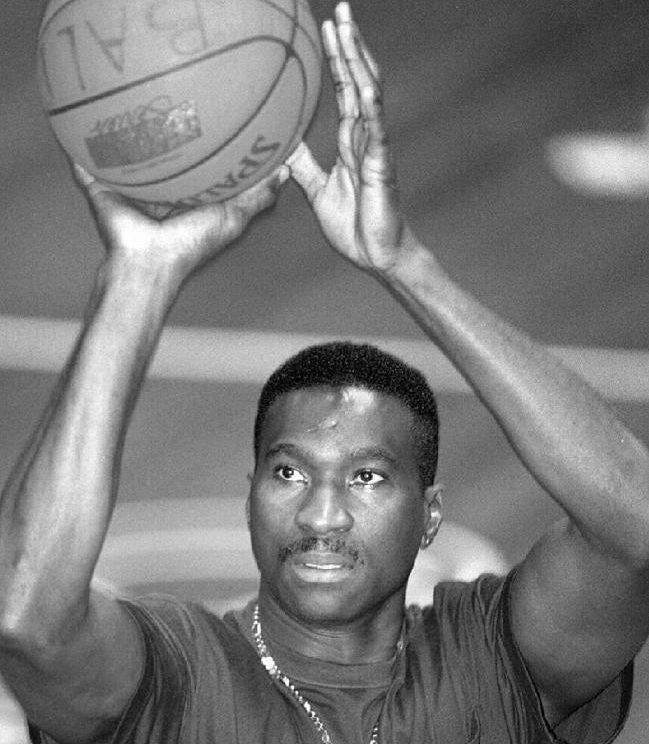 Kendal Pinder, father of current Adelaide 36ers forward Keanu Pinder, played for the Harlem Globetrotters for three years before deciding to spin NBL fans’ heads around instead of basketballs in 1985. His debut season with the Sydney Supersonics saw him average 34 points, 18 rebounds, and 3 assists. It wasn’t a surprise to anyone when he received All-NBL First Team honours at season’s end.
Kendal Pinder, father of current Adelaide 36ers forward Keanu Pinder, played for the Harlem Globetrotters for three years before deciding to spin NBL fans’ heads around instead of basketballs in 1985. His debut season with the Sydney Supersonics saw him average 34 points, 18 rebounds, and 3 assists. It wasn’t a surprise to anyone when he received All-NBL First Team honours at season’s end.
With Melbourne losing Mark Bradtke for all but 9 games in 1995 as he supported his wife’s tennis career, the Tigers would rely on Andrew Gaze to shoulder the offensive load.
The team would finish eighth with a 14-12 record, their worst since 1988. Despite this, Gaze would average 34 points, 4 rebounds and 8 assists per game over the regular season.
30 Years Old

The answer to who was the best 30-year-old player in NBL history is a tough one.
Do you go with “Mean” Al Green, who lit up the league in 1984 with the West Adelaide Bearcats with 40 points, 6 rebounds, 5 assists and 2 steals per game?
Perhaps you go with Andrew Gaze, who earned his sixth MVP after putting up 31 points, 5 rebounds, 8 assists and 2 steals across 35 games?
Chris Anstey returned home from Russia and led the Tigers to their first championship in the post-Gaze era. In 2006 he averaged 23 points, 10 rebounds, 4 assists, 1 steal and 2 blocks and nabbed his first NBL MVP award.
Or there’s Sam MacKinnon, who had the best season of his career in 2007, averaging 19 points, 9 rebounds, 4 assists, 2 steals, and 1 block per game. He captured NBL Best Defensive Player and Most Valuable Player and led the Bullets to the 2007 championship.
Take note that the 2007 Brisbane championship squad is still considered one of the greatest teams in NBL history.
Since Green’s Bearcats finished tenth on the ladder in 1984, Gaze’s Tigers narrowly lost to the Magic in the 1996 NBL Grand Final, albeit in what many consider to be the greatest NBL Finals of all time, we’re going with MacKinnon.
After all, MacKinnon and the Brisbane Bullets had to overcome Chris Anstey’s Melbourne Tigers to capture the championship in 2007 so this effort deserves giving him the edge in our book.
31 Years Old
At 31 years of age, Andrew Gaze won his seventh MVP award and captured his second NBL title by defeating the South East Melbourne Magic in three games. In 1997, Gaze averaged 31 points, 5 rebounds, 7 assists and 1 steal per game.
Al Green’s 1985 numbers are also worth mentioning. At thirty-one, he averaged 31 points, 6 rebounds, 5 assists and 1 steal per game and led the Adelaide 36ers to the championship game but ultimately fell short to Leroy Loggins and the Brisbane Bullets. The NBL Grand Final was a single game that season, and the narrow loss spurred the 36ers to go 24-2 the following year before returning the favour.
32 Years Old

The Melbourne Tigers bounced back from their loss to the Brisbane Bullets in 2008 with Anstey averaging 22 points, 12 rebounds, 3 assists, 2 steals, 2 blocks while shooting 48% from the field. He was a clear choice for both the league’s best defensive player and most valuable player that season. The Tigers then claimed their second title in three years, knocking off a super-talented Sydney Kings team in the process.
Honourable mention to fellow Tiger Andrew Gaze, who, at thirty-two, completed his eight years of league dominance, capturing his eighth and final league MVP in 1998. He averaged 32 points per game, 5 rebounds, 7 assists and 1 steal per game, but team success fell short, with the team finishing fifth whilst attempting to capture back-to-back titles.
It’s also worth noting Owen Wells’s 1983 season with the Sydney Supersonics. After turning 32, Wells led Sydney to a first-place finish on the ladder and averaged 24 points, 7 rebounds, 4 assists, and 3 steals for the season.
33 Years Old
During the NBL’s first winter season, Andrew Gaze’s run of eight consecutive MVP awards was snapped when 25-year-old Steve Woodberry took out the award in 1999.
Gaze’s brilliant form continued, however, with him recording 34 points, 5 rebounds, 6 assists, and 2 steals per game and guiding the Tigers to a third-place finish. Gaze’s Tigers were then eliminated in the semi-finals by crosstown rivals, the Victoria Titans.
Leroy Loggins’ Brisbane Bullets had a sub-par year in 1991, finishing in tenth place with a 13-13 record, but there was nothing sub-par about a 33-year-old “Leaping” Leroy that season. Loggins averaged 26 points, 8 rebounds, 3 assists, 3 steals and 1 block in 26 games.
Martin Cattalini also had his best season at 33 years of age. He averaged 24 points, 7 rebounds and 2 assists and shot 50% while knocking down one of every three shots behind the three-point line.
34 Years Old
Andrew Gaze was named to the All-NBL first team fifteen times in his career from 1986-2000. He was thirty-four when he made his final All-NBL first team, the same year he also guided the Australian Boomers to an equal best fourth-place finish in Sydney before retiring from international play.
In 2000, Gaze averaged 29 points, 6 rebounds, 6 assists and 1 steal per game, but perhaps Gaze was more focused on the Olympics as the Tigers scraped into the playoffs with a modest 14-14 record and finished fifth on the ladder before losing to the Victoria Titans in the Quarter-Finals.
This season heralded the decline of the Gaze-led Tigers. The team would not finish higher than fifth place until Chris Anstey’s arrival in 2005.
At 34, Leroy Loggins continued to star for the Brisbane Bullets. While they finished ninth with a 12-12 record in 1992, Loggins averaged 23 points, 7 rebounds, 4 assists, and 1 steal.
35 Years Old

Robert Rose and the Townsville Crocodiles won the 2001 regular season with a 27-10 record. They would face the Wollongong Hawks in that year’s Grand Final series, the first time either team had made the championship-deciding series. The Crocs would lose by the narrowest of margins (only four points), but it was a history-making season for Rose.
At 35 years of age, Rose was exemplary, he averaged 22 points, 8 rebounds, 6 assists and 1 steal per game and become the oldest player ever to win the league MVP (his second).
Other 35-year-old notables include Andrew Gaze, who averaged 29 points, 6 rebounds, 6 assists and 1 steal, but whose Melbourne Tigers finished a disappointing seventh with a 13-15 record.
Ricky Grace averaged 23 points, 5 rebounds and 6 assists for a Perth Wildcats team that finished fourth in 2002, and Leroy Loggins averaged 23 points, 7 rebounds 3 assists, and 2 steals for the Brisbane Bullets, who finished in the third spot on the ladder in 1993.
36 Years Old
At 36, Leroy Loggins averaged 26 points, 7 rebounds, and 4 assists and led the Brisbane Bullets to a quarter-final matchup against the Adelaide 36ers in 1994. NBL coaches recognised his efforts, and he was named to his ninth and final All-NBL First Team.
Robert Rose’s and Ricky Grace’s efforts at thirty-six years of age also deserve mention. In 2002, Rose averaged 23 points, 7 rebounds, and 6 assists for a struggling Townsville team that finished with 13 wins and 17 losses. Grace was named to his fourth and final NBL First Team after averaging 19 points, 5 rebounds, and 8 assists. Grace led his Wildcats to the NBL Grand Final before losing to the Sydney Kings, who won their first NBL championship in 2003.
37 Years Old
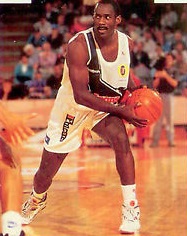
It’s hard to separate who had the most significant impact at age 37 between “Mean” Al Green, “Leapin” Leroy Loggins and “The Factor” Andrew Gaze, who all led their teams in scoring despite being twice the age of some of their younger teammates.
In 1991, Green was playing in Newcastle, averaging 22 points, 5 rebounds and 2 assists on a 53% clip from the field.
Loggins averaged 22 points on 51% accuracy as well as 8 rebounds and 3 assists per game up until the Bullets lost in the Quarter-Finals to the North Melbourne Giants in 1995. Gaze averaged 22 points, 4 rebounds and 5 assists in 2003, leading the Melbourne loss in the Quarter-Finals to Sydney Kings, 2–1.
It’s a tight competition, and all three legendary guards are worthy of the title of best 37-year-old.
38 Years Old
Andrew Gaze sported grey hair during most of his NBL career, but it wasn’t until at 38 that his numbers began to follow suit. While he continued piling up points in 2004, averaging 21 points per game, he could only manage 3 rebounds and 3 assists per game, both career lows at the point. The Tigers hobbled to a fifth-place spot before losing a first-round elimination series to the Brisbane Bullets.
Another notable effort was Al Green in 1992, who, at 38, was still averaging 19 points, 6 rebounds, and 3 assists while shooting 55% from the field. His Falcons struggled to be competitive, however, finishing in twelfth place with a record of 9-15.
39 Years Old

Leroy Loggins bounced back from the worst season of his career in 1996. After recording career lows in points, rebounds and assists (16 points, 5 rebounds and 2 assists), he proved pundits who thought Leroy would retire incredibly incorrect with his 1997 season.
The skinny kid from Baltimore bounced back to average 22 points, 6 rebounds and 2 assists per game at 39 years of age. Perhaps the only stat more impressive than that is the fact he would continue to play on for another four NBL seasons.
The Bullets were still one of the NBL’s stronger teams, finishing fifth on the ladder before narrowly losing in the Quarter-Finals to the Perth Wildcats.
Andrew Gaze played his last NBL season at 39. In 2005, he recorded a highly respectable 21 points, 3 rebounds, and 3 assists per game before retiring alongside his father, Melbourne Tigers coach Lindsey Gaze.
40 Years Old

And so begins the era of “Leaping Leroy”. Only Loggins, Darryl McDonald, Lanard Copeland, Mark Davis, Willie Simmons, Robert Rose, Butch Hays and James Crawford achieved the feat of playing into their fourth decade. Yet no player this long in the tooth or older, for that matter, comes close to Leroy in terms of production.
Incredibly, at 40 years of age, Leroy Loggins was still starting for the Brisbane Bullets and averaging 18 points, 5 rebounds, 3 assists and 2 steals per game.
Imagine being an NBL player in your 20s and 30s, in your prime years, realising you’d just had the ball stolen from you by the 40-year-old hands of Leroy Loggins – remarkably, that happened twice a game, every game in 1999.
The only players who come close to Leroy at 40 are Lanard Copeland (Brisbane) and Darryl McDonald (Melbourne), who were both putting up 9 and 7 points, respectively, at the same vintage.
41 Years Old
Leroy Loggins scored 19 points, 4 rebounds, 2 assists, and 1 steal at FORTY-ONE YEARS OLD! The Bullets were still competitive, too. Behind a Loggins -Woodberry one-two punch, they finished sixth the season with a 13-13 record before losing a quarter-final battle to the Melbourne Tigers.
Darryl McDonald (Melbourne) and Lanard Copeland (Adelaide) turned the clock back at 41, both increasing their output to thirteen points per game. D-Mac also averaged seven assists and two steals while guiding the Tigers to their third NBL title in 2006 alongside Chris Anstey.
42 Years Old
Leroy finally started to slow down at 42 years of age. By now, his numbers had dropped to career lows across the board. Down to 16 points, 4 rebounds, 2 assists and 1 steal per game, but he still was vital enough to clock 29 minutes of playing time each game. The Bullets didn’t quite have the talent they did the previous year and finished 7-21, missing the playoffs for only the third time in his 20 seasons in the NBL.
At 42, Darryl McDonald averaged 11 points, 4 rebounds, 5 assists and 2 steals for a Melbourne Tigers team that lost to Brisbane in the NBL Finals – a loss that motivated him to return for one last season the following year. Lanard Copeland, however, embraced retirement after averaging 10 points, 3 rebounds and 2 assists for Adelaide in his final NBL season.
43 Years Old

It’s a shortlist of players who graced the NBL hardwood at 43 years of age. In fact, the list includes two names. Leroy Loggins and Darryl MacDonald.
McDonald averaged 7 points, 3 rebounds, 3 assists and 2 steals in his swansong season, while Loggins put up 17 points, 6 rebounds, 2 assists, and 2 steals a game. For those of us who thought getting the ball stolen off you by a 40-year-old was bad, these guys were picking pockets twice a game at age 43!
Ridiculously, Loggins was still starting for the Bullets and averaging 36 minutes per game in his final NBL season, but his Brisbane Bullets lacked the talent to compete with the rest of the league and finished second last with a 4-24 record.
McDonald may have been less productive at age forty-three than his counterpart, but he easily had the sweeter send-off of the two. Playing 22 minutes per game off the bench, McDonald helped the Tigers capture the 2008 championship in his final NBL game and even became the first NBL player to play alongside his own son – Derrick McDonald.












One Response to the post:
great idea and concept for an article, though I suspect not original. Made for interesting reading and some flashbacks in my NBL memory, that extends to watching games live from 1984 until today. Shame the contents were very narrow, literally missing a significant number of the greatest players to have ever played in the NBL. Surely some of the following players deserved a mention at some age in their NBL careers: Lisch, Goulding, Grace (in his prime and not an old man post-2000), Vlahov, Longley (yes he did play NBL 1 or 2 games for Perth around the age of 16 or 17), Cotton (he goes OK doesn’t he?), Rogers, Bruton (both father and son), Penny, Gorgian, Borner, Keogh, Webster, Ennis, Jackson, Timmons, Saville, Vukona. Maybe not all, but probably a few hey ? and i reckon I’ve missed a lot as well – just going off the top of my head.